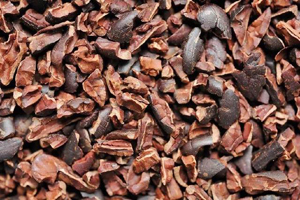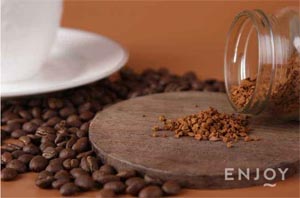How is Chocolate Made? —Chocolate Making Process (2)
Refining
Although the quality of refined chocolate is very fine, it is not delicate enough, and the fragrance is not beautiful and mellow. Refining can further improve its quality. Especially high-end chocolate needs to go through a refining process.
Refining process is carried out in a conche. There are many types of conches, and the most commonly used one is rotary conche. After repeated friction and collision in the conche, the material is further smoothed and finely ground. The moisture and volatile odor in the material are driven out, and the material is fully emulsified, thereby improving the quality of chocolate.

The main conditions required for refining are temperature and time. The requirements for the temperature of the edges and corners of the plasmid vary with the types of chocolate candies. Dark chocolate is 55~85℃; milk chocolate is 45~60℃. The time required for fine grinding is very long, generally 24 to 72 hours.
Refining has the following functions: the quality of the chocolate is more delicate and lubricated; the material becomes thinner and more dispersible, and the color, fragrance and taste are improved.
Phospholipids to be added in refining, phospholipids are extracted from soybean, sunflower and other oils.
Phospholipids have both lipophilic and hydrophilic properties. It has both lipophilic and hydrophilic groups. Its hydrophilic end can also be adsorbed by sugar, cocoa and milk solids. In this way, it plays a surface active role in the chocolate material, so that the material becomes a highly stable milky state, so phospholipids are also emulsifiers.
Phospholipids can change the interfacial tension between the plasmids, can reduce the occurrence and strengthening of the hydration of the material micelles, thereby hindering the formation of jelly, playing a role of dilution, and reducing the viscosity of the material.
Adding more than 0.6% of phospholipids to the chocolate material will no longer decrease the viscosity. Therefore, the amount of chocolate added in the production of chocolate candies is between 0.1-0.5%.
Adding phospholipids to chocolate candies can reduce a certain proportion of cocoa butter, which has a certain economic significance.
Phospholipids also prevent the oxidation of oils and are also antioxidants.
Tempering
The function of temperature adjustment is to control the phase transition of cocoa butter at different temperatures, so as to achieve the effect of tempering.
To make liquid chocolate sauce into solid chocolate candies, it is best to go through the tempering stage. If the temperature is not adjusted or the temperature is not adjusted well, the product quality will be inferior.
Judging from the requirements of the production process, the chocolate material that changes from liquid to solid requires obvious shrinkage, so that it can easily fall out of the mold of the mold. This is a requirement for continuous production lines. Adjusting the temperature according to the requirements of the process conditions can make the chocolate material produce obvious shrinkage performance. Conducive to demoulding and continuous production.
Chocolate that has not been tempered or is not well tempered, after being cold-cured and formed, the product will have a rough texture, a grayish color, and lack the brittleness of chocolate. In the preservation process, it is easy to become rough and similar to the texture of the nest body, and lose the commodity value. Therefore, tempering is an important process in chocolate production.
The chocolate mass contains about 30% cocoa butter. Cocoa butter is the continuous phase in the dispersion system, and its state determines the physical properties of the chocolate. The change of chocolate mass during tempering is essentially a change of the polymorphic characteristics of cocoa butter. The purpose of temperature adjustment is to make the chocolate material produce the highest proportion of crystal form, so that the chocolate production process is smooth and the quality of the finished product is stable.
The refined chocolate mass is generally above 45℃, and its plasmid is in a state of movement and cannot form any crystal form of cocoa butter. Therefore, the material in the storage tank needs to be stirred for a certain period of time before adjusting the temperature.
In the first stage of temperature adjustment, the material is cooled from 45℃ to 29℃. Cocoa butter produces crystal nuclei and gradually transforms into other crystal forms.
In the second stage of temperature adjustment, the material continues to be cooled from 29℃ to 27℃, and part of the unstable crystal form is transformed into a stable crystal form, the quantity increases, and the viscosity increases.
In the third stage of temperature adjustment, the material rises from 27℃ to 29-30℃. The purpose is to melt the unstable crystal form below 29℃, leaving only the stable crystal form, which is the crystal form. At the same time, the viscosity of the material is reduced, which is suitable for the requirements of the molding process.
The temperature adjustment process is a meticulous process, and the temperature adjustment and control must be very strict and accurate. At present, there is no very ideal temperature control machine, and the film type continuous temperature control machine is suitable for the needs of mass production.
After the chocolate material is tempered, it can be used to produce chocolate candies. According to the molding process, chocolate candies can be divided into casting molding and coating molding.
Molding
The temperature and viscosity of the chocolate material used in the mold should be strictly controlled. The material temperature is required to be around 30℃. Too high a temperature will destroy the cocoa butter crystal form that has formed a stable crystal form. The result is loose quality structure, lack of shrinkage characteristics, difficult to demould, and mottling or darkening is easy to appear in storage. The temperature is too low, the material is sticky, the quantitative distribution is difficult when casting the mold, and the bubbles in the material are difficult to eliminate, and the product is prone to honeycomb. Therefore, during the molding process, the material should always maintain an accurate temperature, and it is required to maintain the minimum temperature difference range.
Viscosity is another important factor for material requirements. The viscosity of the material also affects its flow and distribution accuracy. Therefore, the viscosity range of the material should be maintained during the casting process. After pouring the mold, the model should be shaken to make the finished quality solid and prevent the generation of bubbles or voids. The vibration amplitude should not exceed 5 mm, and the frequency should be about 1000 times per minute.
There are two forms of heat in the chocolate sauce: sensible heat and latent heat. Sensible heat refers to the heat released by the chocolate sauce when the temperature is lowered; latent heat refers to the heat released from the liquid state into a solid state. The sum of the two types of heat is all the heat that needs to be removed during the molding process.

The requirements for the cooling process are: after casting the mold, place it in a refrigerator at 8-10℃ for about 5 minutes, and the material temperature will drop to 21℃; after another 21 minutes, the material temperature will drop by 12℃, which is required for cooling. The total time is 25-30 minutes. The cooling rate depends on the cooling temperature, cooling method and product shape.
The cooling rate from liquid to solid should not be too fast. The cooling temperature is generally 8-10℃, and it can be appropriately increased to 12-14℃ in the later stage of cooling. The cooling wind speed is preferably 7 meters per second. When the chocolate block shrinks and deforms, it reaches the end of cooling.
Coating process
The candy made by coating and forming silk is called sandwich chocolate. Most are named after the filling, such as peanut filling chocolate, egg white filling chocolate and so on.
Chocolate packaging
The main functions of the packaging are: heat resistance, moisture absorption and melting, aroma escape, oil precipitation, rancidity, mildew, insects, and pollution. The packaging requirements are beautiful, colorful, and able to maintain the color, fragrance, taste and shape of the chocolate candies for a long time, especially the hygienic conditions.

It is difficult for general wax paper to meet the above requirements. Commonly used packaging materials are: aluminum foil, polyethylene, polypropylene, polystyrene and so on. There are also aluminum foil-polyethylene composite materials or other composite materials.








